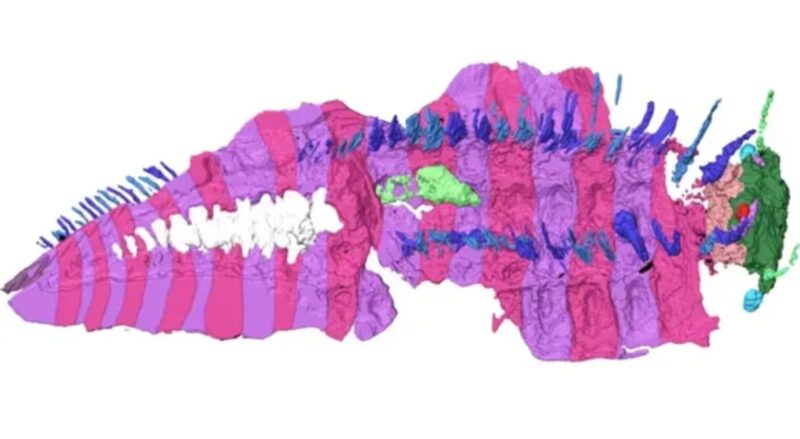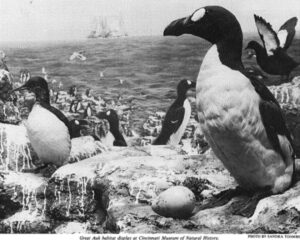This week, scientists have finally unveiled the head of the largest bug ever to exist: an Arthropleura. Researchers have been trying to discover what sat on top of this almost three-meter-long behemoth’s body for over a century. Now they have figured it out.
The giant bug, which we know only from fossils, is a mixture of a millipede and a centipede. Weighing up to 50 kilograms and with 64 legs, its body was divided into armored segments. It would have made a terrifying sight. Luckily, this mega creepy crawly disappeared eons ago. It scuttled around forests near the equator 300 million years ago.
For over 150 years, we have known about Arthropleura from several of its fossils. Unfortunately, all the fossils are the shed skin of the creature as it grew. None include details of the mega-bug’s head.

Illustrations of the juvenile Arthropleura. Image: Jean Vannier, Alexandra Giupponi.
Without the head, a debate has raged about whether the ancient critter was a millipede or a centipede. Its two pairs of legs per segment suggested it was a millipede. But strangely, it seems to be a mixture of the two. The body resembles a millipede, but the head is more similar to a centipede’s.
Paleobiologists pieced together what the huge bug’s head looks like using fossils of almost perfectly intact juveniles found in the 1980s. Using CT scans, the team found bits of the head still embedded in the rock.
The young Atheropleura fossils are only five centimeters long. Researchers are not certain that they grew into this particular giant species, but they are closely related enough to feel confident that this is what Atheropleura heads looked like. The scans show a round bulbous head with bell-shaped antennae, two protruding eyes, and a small mouth perfect for grinding up bark and trees.

The stalked eyes of Arthropleura, shown in blue. Image: Mickael Lheritier
These characteristics suggest that centipedes and millipedes were once more closely related than we thought.
The team is particularly interested in the creature’s protuberant eyes, which are more akin to water-dwelling arthropods like crabs.
“The stalked eyes remain a big mystery because we don’t really know how to explain this,” lead author Mickael Lheritier admitted. It is possible that before roaming the forests, it spent its juvenile life in the water.
The team is now attempting to solve two further mysteries. What did the car-sized invertebrates eat, and how did they breathe?






